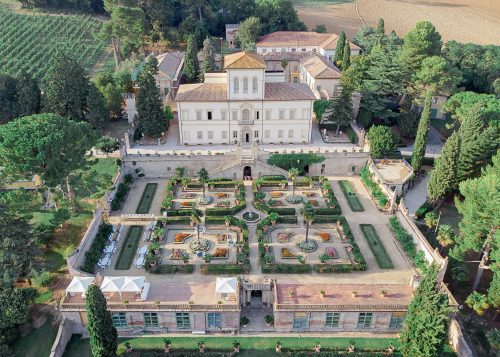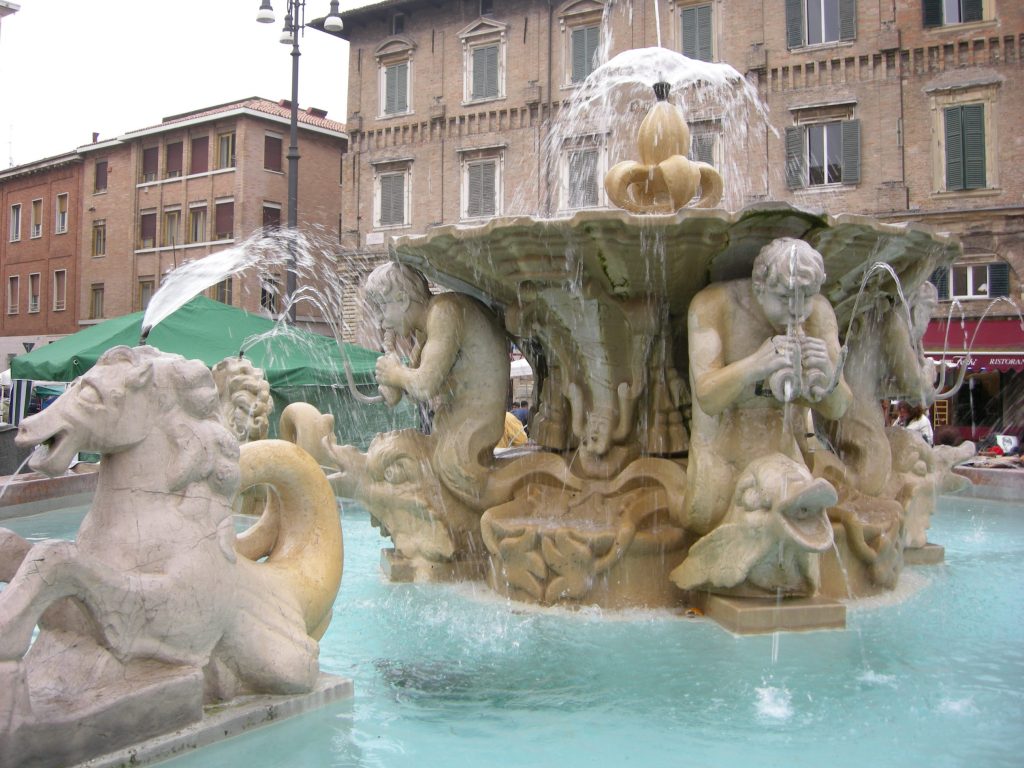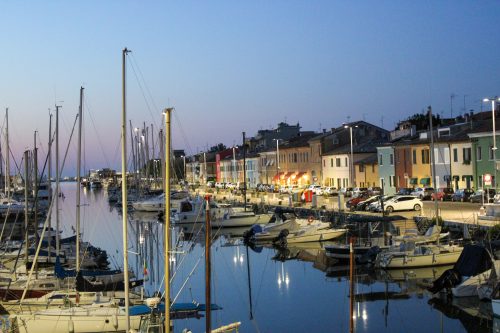The bidding war between potential host cities in Italy is in full swing. A few weeks ago we told you all about making the most of your Eurovision trip to Rome. We would like to tell you a little more about one of the other contenders to host the Eurovision Song Contest 022. In this article you’ll read all about the must sees in Pesaro, Italy.
Pesaro is a city on the coast in the Italian region of Marche and capital of the Provence of Pesaro e Urbino. The city is also called “Cycling City” (Città della Bicicletta). The city got this nickname due to its extensive network of bicycle paths and promotion of cycling. “City of Music” is another familiar nickname to Pesaro, as it is the birthplace of the composer Gioacchino Rossini. Another impressive nickname is ”City of Creativity”, according to UNESCO’s Creative Cities Network. Visiting Pesaro during the Eurovision Song Contest will most definitely not be boring.
Villa Caprile

Villa Caprile
Once known as Villa Mosca, Villa Caprile is a Baroque rural palace on the outskirts of Pesaro. The house was built in the 1640’s as a summer house, inhabited bt the Marquis Giovanni Mosca. The villa was transferred to the commune during the Napoleonic occupations. The villa has been housed over the years by several famous names, including the Princess of Wales, Caroline of Brunswick in 1817-1818. Today the villa houses the Istituto Tecnico Agrario. The landscaping suffered during the second world war. The gardens and fountains are open for visitors since 2015. The interiors of the villa are in need of restoration. If you’re into architecture and traditional Italian gardens, this is a must see.
Parco Naturale Monte San Bartolo
Parco Naturale Monte San Bartolo is definitely worth a visit if you love nature and pretty views. This nature reserve is one out of four in the region of Marche and is full of flowers, plants, birds and special animal species. It is an ideal place to relax if you need to escape the Eurovision crowds for a bit. It’s a unique nature reserve, which has been renamed Dante’s Inferno for sailors because of the windswept and dangerous promontory. In case you’re not much of a daredevil, we’d advise hiking or biking to explore this beautiful park.
Piazza del Popolo

La Pupilla di Pesaro
Piazza del Popolo is a beautiful and quite busy square surrounded by the (former) Post Office, Il Palazzo Ducale, Palazzo Municipale, and Palazzo della Paggeria. These buildings are a few of many medieval buildings in town. In the center of the square is a beautiful fountain, La Pupilla di Pesaro. In summer the pigeons like to cool off here. The square is located in the historic center of Pesaro, which used to be a thriving Jewish community. On the corner of Piazza del Popolo and Via Rossini you will find a beautiful tribute to the victims of the Second World War. For example, you will find a page from Anne Frank’s diary and her identity card.
San Marino
Officially, San Marino is called the Republic of San Marino, surrounded by Italy and surprisingly close to Pesaro. Within an hour by car you are in the oldest existing constitutional republic of the world. If you plan on traveling to San Marino by public transport, you should take into account that the journey there will take you a little longer. San Marino is not very big, which makes it ideal for a day trip when you’re staying in Pesaro. There are many interesting sights that you can visit. You can also choose to stroll around. You can easily spend half a day doing so. San Marino is also suitable for beautiful bike rides, where you can discover the lesser-known places of San Marino. If you like to collect stamps in the passport, you can buy one for €5,- in the tourist office.
Staying in Pesaro
Pesaro has a lot to offer. We would be thrilled to visit this beautiful city during the Eurovision Song Contest in 2022. There’s a great balance between historical sights, nature and obviously, Italian cuisine. Our friends who love the nightlife are also thought of. There is certainly a nightlife in Pesaro, although it will not be as vibrant as, for example, in Rome. There are a lot of hotels, bed & breakfasts and vacation rentals available in different parts of the city. Depending on your wishes, you can definitely find a good place to stay during your visit.

Pesaro, Italy



